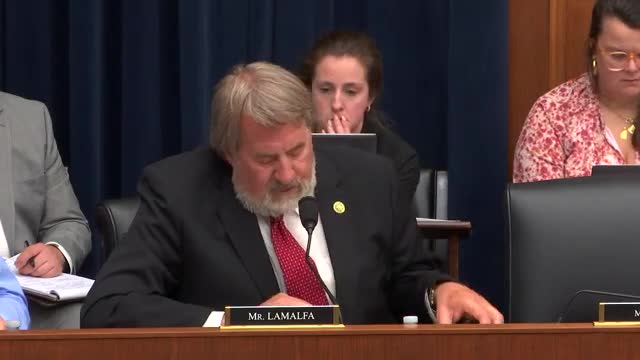High speed rail faces scrutiny amid soaring costs and delays
June 14, 2024 | Transportation and Infrastructure: House Committee, Standing Committees - House & Senate, Congressional Hearings Compilation

This article was created by AI summarizing key points discussed. AI makes mistakes, so for full details and context, please refer to the video of the full meeting. Please report any errors so we can fix them. Report an error »

During a recent government meeting, discussions centered on the challenges and future of public transit in the United States, with a particular focus on California's high-speed rail project. The project, initially estimated to cost $33 billion, has ballooned to an estimated $128 billion and is significantly behind schedule. Critics, including members of the Reason Foundation, argue that while high-speed rail may have niche applications, its overall potential is overstated, especially given the diverse geography and population density across the country.
The meeting also addressed the balance of federal funding for transit agencies, particularly the distinction between capital and operational funding. Currently, rural and small urban transit agencies can use federal funds for operational costs, while larger agencies face restrictions. Participants emphasized the need for flexibility in funding allocation, allowing agencies to prioritize their most pressing needs, whether that be expanding service or maintaining existing infrastructure.
The conversation further explored the concept of microtransit and on-demand services as innovative solutions to enhance public transportation. Advocates highlighted that while microtransit can appear more expensive per rider, it often proves cost-effective by efficiently connecting users to existing transit systems, particularly for first and last-mile journeys. This approach has shown promise in increasing ridership and improving access to public transit, especially in the wake of pandemic-related declines.
Overall, the meeting underscored the complexities of public transit funding and the necessity for adaptable solutions to meet the varying needs of communities across the nation.
The meeting also addressed the balance of federal funding for transit agencies, particularly the distinction between capital and operational funding. Currently, rural and small urban transit agencies can use federal funds for operational costs, while larger agencies face restrictions. Participants emphasized the need for flexibility in funding allocation, allowing agencies to prioritize their most pressing needs, whether that be expanding service or maintaining existing infrastructure.
The conversation further explored the concept of microtransit and on-demand services as innovative solutions to enhance public transportation. Advocates highlighted that while microtransit can appear more expensive per rider, it often proves cost-effective by efficiently connecting users to existing transit systems, particularly for first and last-mile journeys. This approach has shown promise in increasing ridership and improving access to public transit, especially in the wake of pandemic-related declines.
Overall, the meeting underscored the complexities of public transit funding and the necessity for adaptable solutions to meet the varying needs of communities across the nation.
View full meeting
This article is based on a recent meeting—watch the full video and explore the complete transcript for deeper insights into the discussion.
View full meeting